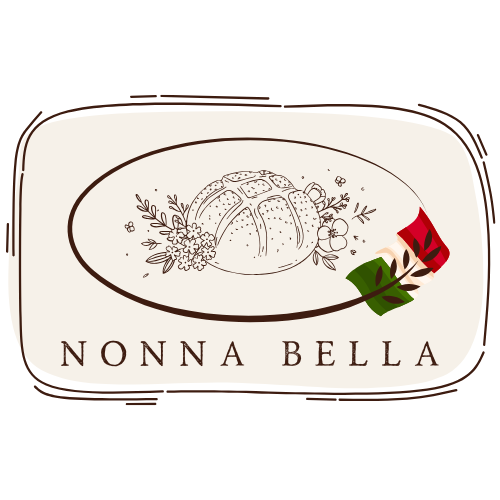
The Art of Artisan Bread Baking: A Guide to Perfect Sourdough
Welcome to the fascinating world of sourdough bread baking, a time-honored tradition that combines a few humble ingredients with technique and patience to produce incredible results. Whether you're a seasoned baker or just beginning your journey into the realm of wild yeast fermentation, this guide will lead you through the essential aspects of creating homemade sourdough bread. Our journey will encompass everything from understanding the sourdough starter, exploring the differences between sourdough and conventional yeast breads, troubleshooting common issues, and guiding you to a perfect loaf every time.
For more detailed information and to explore our products, visit Italian Sourdough.
Understanding the Sourdough Starter
The sourdough starter is the heart of any sourdough bread recipe. It's a living organism—a culture of flour and water colonized by wild yeast and bacteria—that needs care and feeding. When you maintain a starter, you embark on a relationship with this culture.
How to Feed Sourdough Starter
Regular maintenance is crucial for keeping your sourdough starter healthy. Here's a basic feeding schedule:
- Discard - Remove about half of the starter.
- Feed - Add equal parts by weight of flour and water to the remaining starter.
- Rest - Let it sit at room temperature until bubbly and active.
How to Store Sourdough Starter
For weekly bakers, keeping the starter at room temperature is ideal. If you bake less frequently, store your starter in the refrigerator and feed it once a week.
The Sourdough Fermentation Process
Sourdough fermentation is a magical alchemy that transforms flour and water into a flavorful loaf. The process harnesses the power of natural yeast and lactic acid bacteria. Through long, slow fermentation, sourdough develops its characteristic flavor, texture, and nutritional benefits.
Benefits of Sourdough Fermentation
Consuming sourdough, particularly for diabetics, can be beneficial because the fermentation process lowers the bread's glycemic index. This traditional bread is also easier to digest and can benefit gut health due to the presence of beneficial bacteria.
Wild Yeast Fermentation vs. Commercial Yeast
A key distinction in artisan bread baking is the use of a sourdough starter versus conventional yeast. Sourdough fermentation yields complex flavors and textures not present in yeast-based recipes.
Sourdough Starter Troubleshooting
If your starter isn't bubbling or growing as expected, it might be a sign of improper feeding or unsuitable environmental conditions.
Common Issues:
- Temperature: Ideal temperature ranges for starters are typically around 70°F to 75°F.
- Flour Type: Use a mix of whole grain and white flour for initial feeding for more nutritious ingredients.
- Water Quality: Ensure you use filtered or boiled water to avoid chlorine, which can inhibit yeast growth.
How to Bake Sourdough Bread
Embarking on the journey of baking your own sourdough can be incredibly rewarding. Here’s a simplified sourdough bread recipe:
Easy Sourdough Bread
Ingredients:
- 1 cup active sourdough starter
- 1 1/2 cups water
- 4 cups all-purpose flour
- 2 teaspoons salt
Instructions:
- Mix: Combine all ingredients in a large bowl.
- Autolyse: Let the dough rest for 30 minutes.
- Knead: Stretch and fold the dough for 5-10 minutes until smooth.
- Bulk Fermentation: Let it rise at room temperature for 4-12 hours.
- Shape: Shape your dough into a loaf.
- Second Rise: Allow it to prove in a banneton.
- Score and Bake: Use a sharp blade to score the top. Bake in a pre-heated oven or a Le Creuset Dutch Oven.
Best Sourdough Scoring Techniques
Scoring is essential to control expansion and aesthetics. Experiment with different patterns, and use a Professional Baking Slicing Knife for precise cuts.
Tools for the Perfect Bake
To succeed in making artisanal sourdough, certain tools can enhance your baking process:
- Danish Dough Whisk: Efficient mixing with less effort.
- Silicone Bread Sling: For safe and easy handling of dough.
How to Shape Sourdough Bread
Proper shaping adds strength and structure. To shape:
- Gently pre-shape dough into a round.
- Let it rest, then shape it tightly into a boule or bâtard.
How to Get a Crispy Sourdough Crust
A crispy crust is one of sourdough's most-loved features. Bake with steam in the oven, as in a Dutch Oven, to lock in moisture before creating a crisp exterior.
Sourdough vs. Regular Bread
Compared with regular bread, sourdough boasts a unique flavor and longer shelf life. Its nutritional profile is superior due to lower levels of phytic acid, which enhances mineral absorption.
Contributions of the Organic Sourdough Starter with Legacy
Utilizing an organic sourdough starter with a long legacy can imbue your bread with historical richness and depth of flavor.
Delicious Possibilities: Beyond the Loaf
Sourdough is versatile and extends beyond just bread:
- Sourdough Pizza Dough: Offers a tangy crust with a chewy texture.
- Sourdough Bagels: Delightfully chewy with a hint of tang.
- Sourdough Discard Recipes: Utilize excess starter in pancakes, waffles, and muffins.
Conclusion
The art of artisan bread baking is both a science and a craft. With the right sourdough starter and techniques, patience, and creativity, you can cultivate a deep connection to this ancient practice and produce delicious and nutritious homemade sourdough bread.
Embark on your sourdough journey now—explore our range of products and start baking! Visit Italian Sourdough.
